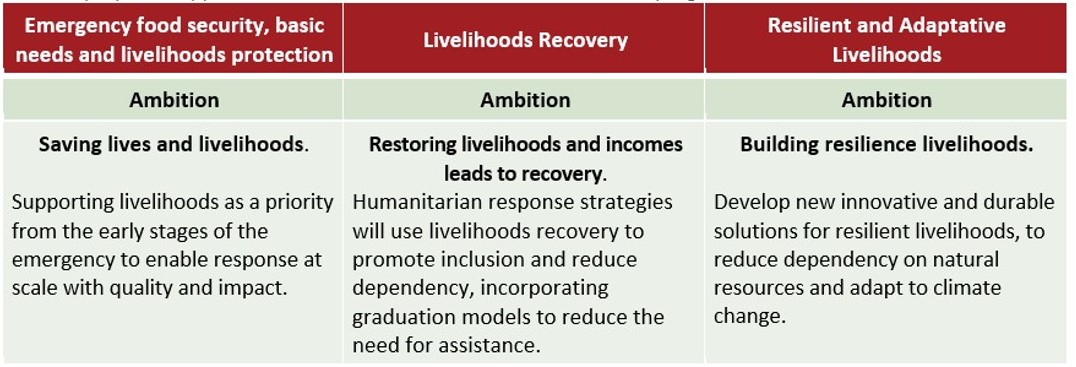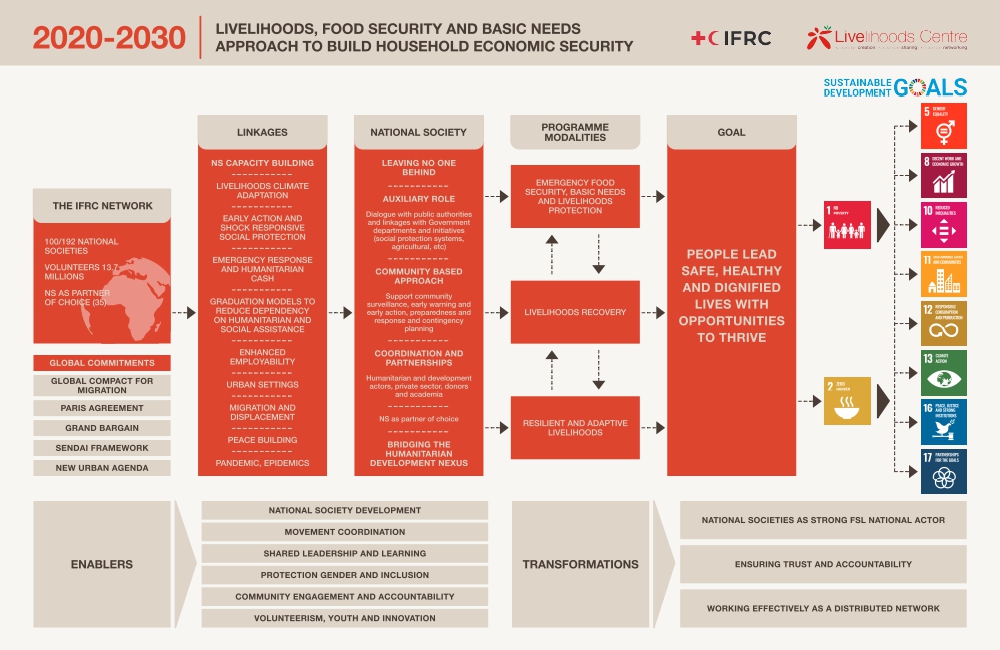FSL Approach - Livelihoods Centre
Proposed FSL Approach

Proposed FSL Approach
Livelihoods, Food Security and Basic Needs Approach to build household economic security
-
The FSL Approach
With FSL being a key element across the DRM continuum, the proposed FSL and Basic Needs approach aims to reduce gaps between the humanitarian response (emergency and early recovery, recovery) and resilience, which are closely interlinked. It is clear that as soon as affected people are supported with livelihoods and basic needs at early stages of the disaster, the time to become self-sufficient and autonomous becomes reduced, so they do not depend on humanitarian assistance.
It is also very important to invest in understanding and addressing the underlying causes of crisis, emerging risks and vulnerabilities and in integrating ethical and principal approaches to ensure the sustainability and well being of people and ecosystem, in food security and livelihoods interventions. There are clear linkages with climate adaptation, urban setting, early action and shock responsive and social protection, humanitarian cash, migration and displacement initiatives where the synergies with the proposed approach need to be reinforced.
-
Programme Areas
The new proposed approach focuses FSL initiatives in the three main program areas:

(i) Emergency: Access to basic needs, protecting livelihoods and reducing further losses should be main outcomes in our humanitarian responses including a well-defined exit strategy, with integrated quality programming at scale, ensuring impact, facilitating people to graduate from humanitarian assistance, leaving no one behind. Livelihoods investment contributes also to the achievement of other sectoral and well-being outcomes/objectives, while protecting assets and ensuring food security and further falling into poverty and exclusion. Adequate response modalities (cash, voucher, in-kind, services or combination) should be selected to maximize programmatic outcomes. Opportunities to link and work through established social protection mechanisms must be explored where these exist.
(ii) Recovery: FSL interventions must be part of an integrated approach to recovery and should be designed around the concept of ‘’graduation’’, where people affected are supported with their livelihoods and basic needs to become self-sufficient and autonomous by the end of the intervention. This means enabling those assisted to ‘graduate’ from humanitarian assistance by recovering their livelihoods, while ensuring that the most vulnerable who need continuing assistance can transition to a social protection mechanism. The activities should work together to achieve self-sufficiency and promote sustainability, reducing vulnerability and strengthening resilience.
(iii) Resilient livelihoods: We need to develop innovative and durable solutions for resilient livelihoods, to reduce dependency on natural resources and adapt to climate change, helping to reduce forced migration. We also need to address the impact of climate change in urban areas by integrating early warning mechanisms to prevent avoidable damage to livelihoods. Further links to social protection systems are required, allowing livelihood interventions to help individuals to be less reliant on external assistance.



